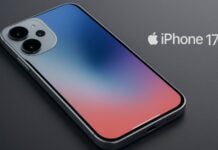MacBook 12 inch sau noul MacBook, urmeaza sa fie disponibil de maine impreuna cu Apple Watch, iar astazi vedem primele review-uri pentru noul produs, o multitudine de publicatii de pe intregul glob primind versiuni aurii ale Mac-ului pentru a-l testa timp de o saptamana de zile. Exact precum in cazul review-urilor Apple Watch, cei care au testat noul MacBook 12 inch au fost impresionati de ceea ce a reusit sa realizeze Apple, insa nu s-au sfiit sa critice problemele pe care ultrabook-ul le are, performantele si noul port USB-C fiind in prim-plan.
Majoritatea celor care au testat produsul sustin ca el nu este pentru orice fel de utilizatori, performantele sale tinand deoparte oamenii care au nevoie de productivitate si nu sunt dispusi sa renunte la rapiditate pentru cel mai usor si mai subtire Mac realizat vreodata. In aceeasi masura se pare ca nici tastatura nu a fost pe placul multora, acestia reclamand faptul ca noua tehnologie folosita de catre Apple nu ofera o experienta de utilizare chiar atat de grozava, asa ca MacBook 12 inch trebuie testat intr-un Apple Store inainte de achizitie, altfel s-ar putea sa regretati decizia de a il cumpara.
Mashable:
If you value speed and performance above all else, you want a MacBook Pro. If you want something portable, fairly powerful and extensible, the MacBook Air is a great fit.
The MacBook, as it exists today, is really for a very particular group of people who want the thinnest, lightest MacBook they can get. It’s not intended to be a professional machine — though I can see this as a new standard issue for some executives, those who value portability above all.
This is the notebook for people who love their iPad but want something with a real keyboard and a bigger screen. It’s a great second computer to compliment an iMac or a larger MacBook Pro.
Engadget:
Much like the original Air, the new MacBook is expensive, and it’s not for everyone. In particular, it’s for well-heeled shoppers who demand the most portable machine possible, and who also don’t want to compromise on screen quality. That might not be persuasive to would-be Windows users, who have several compelling alternatives, many with equally sharp screens and a bigger selection of ports. But for loyal Mac fans who wouldn’t dream of switching, the new MacBook is by far the lightest-weight machine in Apple’s lineup, especially with this caliber of screen. It’s not for everyone, especially not right now, but if it’s anything like the Air, it might one day become the standard.
The Verge:
This new MacBook is the future. All laptops are going to be like this someday: with ridiculously good screens, no fans, lasting all day. Just like the original MacBook Air defined a generation of competitors, this new MacBook will do the same. It, or something inspired by it, is what you’ll be using in two or three years. It’s that good.
Here’s a crazy surprise I didn’t expect: my 13-inch MacBook Air felt big and clunky after I went back to it. And make no mistake, the MacBook Air is itself a wonder of engineering. Yet compared to the new MacBook it felt like a heavy, kind of ugly throwback with a mediocre screen. I really didn’t want to go back to that Air.
But I still went back.
You see, the problem with the future is that it isn’t here yet. Instead we live in the now, and the now doesn’t have the ecosystem of adapters and wireless peripherals I need to use this laptop with its single port. The now doesn’t have the right processor to power through the apps I need without ruining battery life. And right now, this laptop is far from cheap at $1,299.
CNET:
My initial impression of the original MacBook Air from 2008 feels timely and fitting here. Of that laptop, which was considered both groundbreaking and frustratingly limited, I said:
“The design is revolutionary, but Apple’s MacBook Air will appeal to a smaller, more specialized audience than the standard MacBook, thanks to a stripped-down set of connections and features.”
Likewise, this new MacBook will also be the right fit for a smaller segment of a public than the more universally useful 13-inch MacBook Air or Pro. But those who can work with the limitations — primarily a lack of ports, shorter battery life, performance that’s not suited for pro-level photo and video editing, and a shallow keyboard that takes some getting used to — will love its sharp display, slim and light body, and responsive touchpad.
My primary caveat is this — if history is any guide, you can count on a near-future generation of this laptop boosting its utility by doubling the number of USB-C ports to at least two. So like many new technology products, it may be worth waiting for the next version, even if having a 12-inch, two-pound gold MacBook right now will make you the coolest kid at the coffee shop.
Recode:
If money is no issue for you, you want a significantly smaller laptop, and you don’t mind being limited by a lack of ports, then maybe upgrading to the new MacBook makes sense for you.
But if you rely on USB ports and SD card slots, this MacBook’s single port for charging, storage transfers and other functionality will really bug you.
In a few years, we may look back on this laptop’s missing USB ports like we look back on the original MacBook Air’s absent Ethernet port or missing optical disk drive (here’s that 2008 review by Walt Mossberg), thinking, “Who needed that?” We’re just not quite there yet.
Techcrunch:
Apple’s new MacBook seemed like a shift so dramatic that it was bound to cause some discomfort when it was unveiled on stage in March in San Francisco, but in practice the big changes are far easier to embrace than you might expect.
It’s true that for users who treat their notebooks as their sole computers, and who like to plug a lot of things into those computers as a result, this probably isn’t the best option. But for people looking for a mobile Mac to complement their desktop machine, and for those who aren’t sending their whole day on their Macs for work (meaning likely the vast majority of general consumers), this is a future-oriented notebook that is just as effective in the present, too.
Macworld:
The MacBook is a gorgeous piece of hardware. The Retina display is excellent, and I’m really loving the Force Touch trackpad. The keyboard is more of a hit-or-miss affair; if you’re someone who is particular about your keyboards and spends a whole lot of time typing, it may be a deal-breaker.
This is a laptop that will serve its audience well. That audience is one that prioritizes size, weight, and stylishness over compatibility and ports and computing power. I’d say that this isn’t a laptop for power users, but I don’t think that’s true—there are whole classes of “power users” who don’t actually need more power than the MacBook can provide.
But if your workflow includes lots of USB flash drives and external hard drives, if you’ve invested in Thunderbolt hard drives or displays, or if your work really does require 16GB of RAM and the very fastest processors around, the MacBook won’t be a good fit. Fortunately, Apple’s isn’t ceasing production of the MacBook Pro—and it offers all of that and more.
Ars Technica:
Peoples’ angst about the MacBook’s port situation isn’t really about the MacBook, but rather a fear that all of Apple’s laptops are going to jettison all their ports. The company has maintained separate “pro” and “consumer” lines of laptops for years and years—the MacBook is clearly the future of the consumer line, but less-compromised hardware for pros will continue to exist. Apple is still selling all the laptops it was selling before the MacBook was announced, though the Air’s days are probably numbered at this point.
Ultimately the new MacBook feels like a first-generation product—a very good first-generation product, but a first-generation product nevertheless. It’s got some promise and a couple of major shortcomings and you don’t need to be the first person who takes the leap into the Brave New Future it represents. I use an iMac as my primary computer and a 13-inch MacBook Air when I’m sitting on the couch or in a café or on a plane, and perhaps 90 percent of the time this MacBook can replace the Air without issue. If this is going to be your main computer or only computer or if you’re one of the bare handful of people who use Thunderbolt for something, it’s hard to recommend.
Yahoo Tech:
But unless you’re a well-heeled executive who doesn’t do much besides write, email, and surf the Web, the price you pay — in speed, utility, and, yes, price — is just too high.
We know what this is: This is the 2008 MacBook Air. Today, the MacBook Air is frequently cited as the best laptop on the market — but the first model, in 2008, was also called overpriced, underpowered, and amazing-looking. In the same way, the 12-inch MacBooks of 2016 and 2017 will lose their flaws, enter a new era of USB-C compatibility, and seem much more at home in a more wireless world.
Even Apple is allowed to start with a 1.0 version. But you don’t have to buy it.
USA Today:
The other innovation is the presence of a new connector called USB-C, an emerging industry-wide standard. I have no quarrel with Apple’s decision to lead with the new connector itself. It is small–about a third of a size of a conventional USB connector- and versatile. It can handle, power, data and video all in one, and the plug is reversible so that you can insert it into the computer in either orientation.
My problem is that aside from a headphone jack, this is the new MacBook’s only connector. If the USB-C power cable that Apple supplied is already plugged in and you want to plug in any other USB accessories at the same time you’ll need an optional adapter. And those don’t come cheap–a USB-C to regular USB dongle from Apple fetches $19. A multiport USB-C adapter (with ports for full-size USB, an additional USB-C port, and HDMI) costs $79. Of course, you’ll see cheaper adapters from third party suppliers but now you have another accessory to travel with and keep track of.
Fast Company:
Now, if you perform industrial-strength computing jobs such as serious video editing, you might well crave more performance than the MacBook provides. Then again, you’d also likely want a larger display, more copious built-in storage, and the ability to plug in external hard drives based on the ultra-zippy Thunderbolt technology. What you’d want, in other words, would be a MacBook Pro.
That’s the thing about the new MacBook: It doesn’t cater to exactly the same audience as any existing Mac. It’s a really good laptop—assuming you can figure out how to make USB-C make sense for you—and yet its size, weight, and overall minimalism give it an iPad-like persona. The thinking behind it is a different, more subtle way of mixing PC and tablet than all those other devices that try to be both at once. But like the original 2008 MacBook Air before it, this specialty Mac could also be a blueprint for the next generation of mainstream notebooks.
Bloomberg:
With the new keyboard and trackpad innovations, lust-inducing industrial design, and impressive downsizing of internal components, the MacBook feels like a an important next step in the evolution of portable computers. But this machine isn’t for everyone, particularly those who expect extremes from their devices. Still, if you prioritize style, need something ultraportable, and don’t mind trading power for a crisp and clear Retina display, then the perfect computer may have arrived.
Wired:
I’d much rather see the MacBook ship with two USB-C ports like the new Chromebook Pixel, but soon enough, even the one port won’t be such a problem.
Apple’s real bet is that you won’t need that port for much of anything. Ditch your external hard drive, the USB-C port begs, and use Dropbox instead. (Well, it would probably recommend iCloud, but don’t use iCloud.) Forget about your second monitor, because look at this screen! Oh, and that thing you do where you plug in your laptop every single damn time you sit down? Stop doing that. This’ll last you all day.
That last claim is so close to being true, too. I can work a full day at the office on the MacBook with no problems. Granted, this consists largely of using Office and a web browser, neither of which are terribly taxing. Those simple tasks are also exactly what the MacBook’s Intel Core M processor is designed for. But as soon as I open Photoshop, fire up Steam, or even crank up the brightness to watch The Tudors (great show), the laptop slows and the battery drains quickly.






























